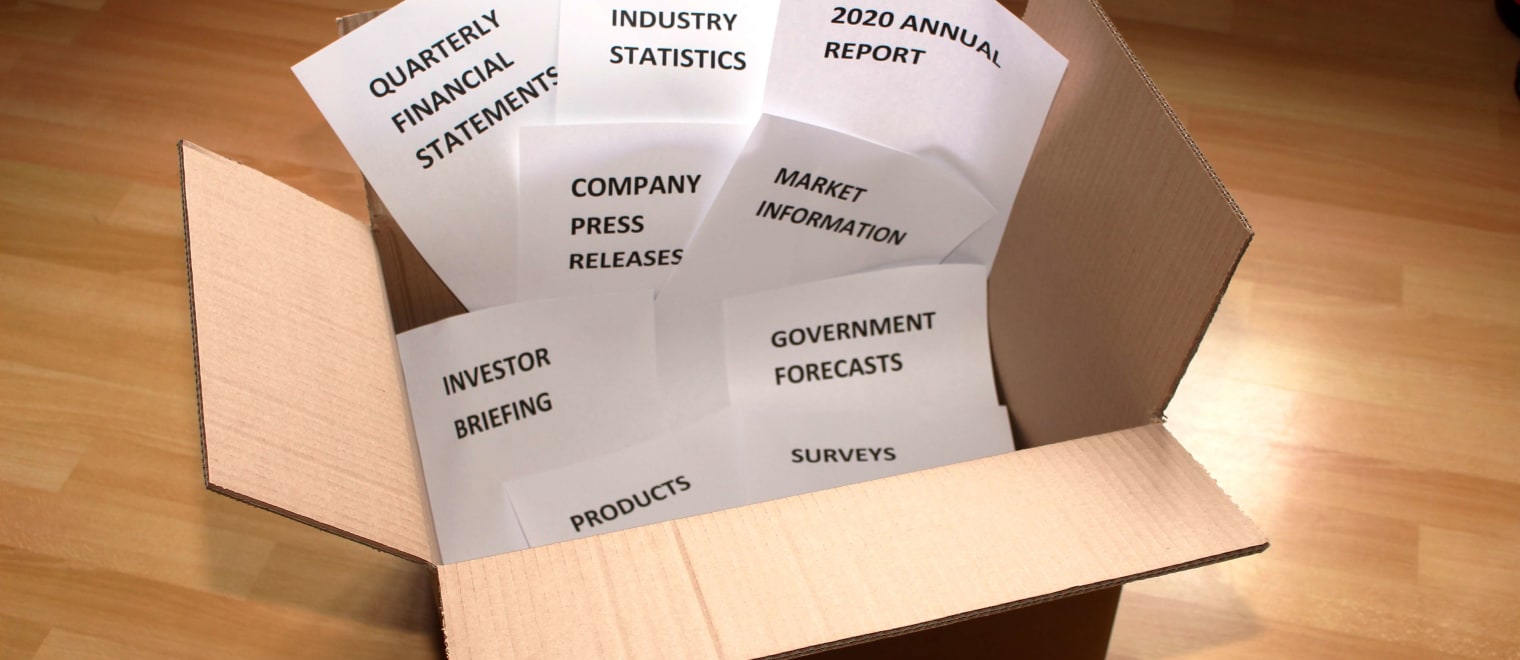This informal CPD article on Make the Most of What You’ve Got was provided by Brian Weatherley at B2B Media Training, an award-winning trade journalist, video presenter, business-to-business magazine editor and media trainer.
Preparing for a press encounter
In every one of my media training courses I ask trainees: “When you’re preparing for a press encounter, what’s the very first go-to source of information you should be looking at to help you create your messages?” There’s often a marked silence, while they desperately think of an answer. So what is this wonderful source of inspiration that senior managers should reach for ahead of any interview with a journalist?
Making the most of the information available to you
Once a year, large corporations invariably create an annual report, usually available as a PDF on the company website and as a glossy publication. However, all-too-often it ends-up unread in a dark drawer or the digital equivalent. Yet look inside any major company report and you’ll find a fantastic repository of facts, figures and commentary that can help you deliver a strong narrative to the media. Need to prove you’ve increased production? Or boosted profitability? It’s all in there, and not just facts and figures.
Annual reports also contain statements from the chairman or CEO confirming corporate strategies, onward business focus, core messages, market conditions and future commitments. They’re a veritable gold mine. Moreover, the information within them will have been approved (or should have been!) by the corporate communications team, as well as the accountants and auditors. So it’s ‘safe’ to refer to.
Annual reports, quarterly results, investor statements, press releases, website and social media pages…
But there’s an even more important reason why you should read it—because a journalist can too. It’s the quickest way to get valuable ‘background’ on a business ahead of an interview. That’s not all they’ll read either. They’ll peruse your quarterly results, investor statements, press releases, website, and social media pages. In fact, they could ask you about anything you’ve recently put into the public domain. So you need to absorb it before they do. After all, you wouldn’t want them knowing more about your business than you do…would you?
Creating a Knowledge Box
But how can you make all that information work for you? The answer, create a ‘Knowledge Box’, a handy-place for all the recently-published corporate material your business has put out, which you can refer to and use whenever you need to create messages ahead of an encounter with the press. It can be in a folder within the company’s intranet, or even a simple box-file with hard-copy literature. Only don’t keep it to yourself. Share the knowledge amongst your colleagues as they could well have useful business information you were unaware of that you can use the next time you talk to a journalist. And don’t just restrict it to corporate information. Put in business surveys, media articles, Government reports, anything that can help establish you amongst the press as a ‘thought leader’ in your market sector.
Better still task someone in your organisation to be the official keeper of that knowledge box – someone who’ll keep it regularly up-dated, and encourage everyone to contribute to it too. But whatever you put in it, the very first thing should be the annual report. Just make sure you read it first…
We hope this article was helpful. For more information from B2B Media Training, please visit their CPD Member Directory page. Alternatively please visit the CPD Industry Hubs for more CPD articles, courses and events relevant to your Continuing Professional













